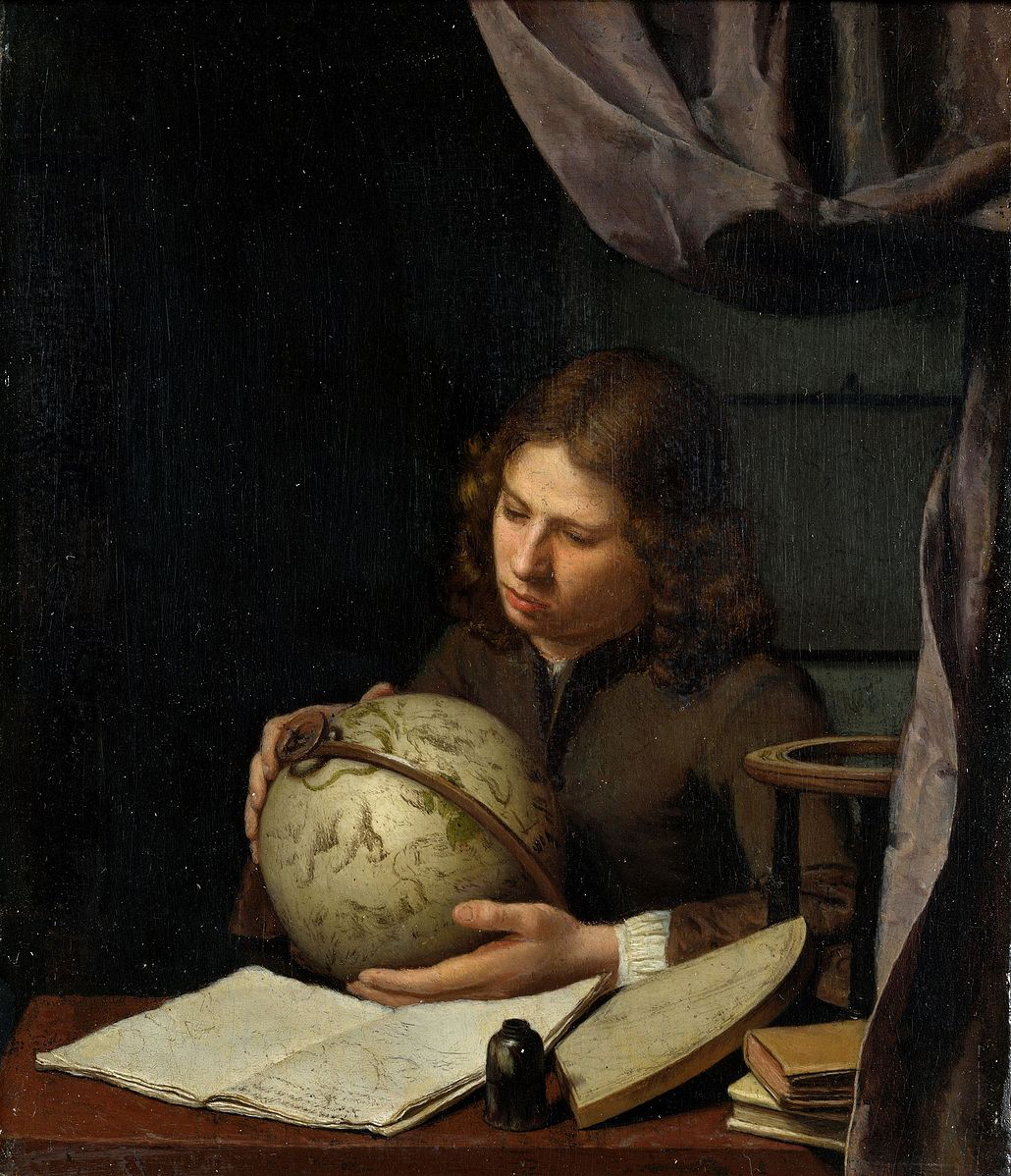Editor’s Note: This article is a review and includes subjective thoughts, opinions and critiques.
At one point or another, I think we’ve all been starstruck in a literal way — stunned by the cast of stars and planets gracing our night skies. We look up toward the boundless, glittering void of outer space with equal parts wonder and terror (and perhaps these are one and the same), facing the formidable forces that govern that void, reckoning with their unknowability and indifference. We strain our eyes to see more clearly those speckles of light punctuating the darkness, watching as they appear and disappear, trying to distinguish stars from planets from satellites from aircraft. And we fall quiet, mesmerized and moved.
In Olivier van Deuren’s “A Young Astronomer” (ca. 1685), a captivated stargazer, three centuries our senior but immortalized in oils, does the same.
Only not under an actual sky: He sits in a study behind a purple curtain, brows gently furrowed, supple fingers caressing a celestial globe that has been removed from its stand — vulnerable to his scrutiny but hesitant to surrender its cosmic secrets. It’s a three-dimensional model showing the relative locations of stars and constellations. On it, we see the hazy suggestion of a bear for Ursa Major, the scrawny outline of a lion for Leo.
I suspect that this stargazer searches not only for material answers to concrete scientific questions, but also a certain immaterial inspiration buried deep and burning bright within this atlas of the stars. The globe, after all, calls to mind the 17th-century elucidations by Johannes Kepler of orbital mechanics and by Christiaan Huygens of the rings of Saturn. For a budding scientist like the one we meet in the portrait, these monumental achievements might be as inspirational and motivational as they are intimidating.
In this sense, our young astronomer faces a penumbra of competitive pressure spurred by Dutch Golden Age innovation. In the wake of Kepler and Huygens, must he, too, make a seminal contribution to the field? If so, how? He appears slightly bemused by the task, intimidated by its scale and scope. The empty right-hand page of his notebook taunts him impatiently with a question: what next?
But there’s more to the visual narrative here. I’ve known Van Deuren’s picture now for eight years, but until recently, I had never stopped to ponder what was absent from the image. It struck me that a crucial implement of the stargazer’s craft, one that enabled the great discoveries of Kepler and Huygens, is missing from this young man’s table: the telescope.
This curious omission undermines my presumption that our young astronomer aspires only to follow in the scientific footsteps of his lauded contemporaries and forebears. It also urges me to reconsider why he has stripped the celestial globe of its wooden frame, a choice I now understand as an intentional rejection of the stability provided by that base.
The mystery of his objective deepens: with telescope excluded and globe denuded, he practices not the scientific method but a raw, spiritual exploration of galactic vastness and constellatory possibility. He exists at a crossroads between the worldly and the metaphysical, between the dreary reality of his musty room and the disruptive potential of a boundless void.
Further clues to these undertows of spirituality and interiority lie in the color scheme of the background. There, the stark contrast between the jet-black void at left and conventional, lighter-toned wooden boards at right betrays broader symbolic tensions between innovation and tradition.
The base of the globe and the wedge of the altitude-measuring sine quadrant, both embodiments of tried-and-true astronomy, sit before the lighter segment of background, a section that intimates the familiarity of canon and orthodoxy. Our astronomer has uprooted the celestial globe from its typical place in tradition, however, and brought it leftward to the pitch-dark, yet-to-be-illuminated world of discovery and revelation.
His figure, then, occupies a liminal space between the two, negotiating the charm of the familiar and allure of the unknown.
He yearns, Van Deuren seems to suggest, for a profound philosophical understanding of our cosmic order, one that might read more spiritual than scholastic. Favoring meditative mysticism over rigid intellectualism, he embodies the need to investigate the gray areas lying between the black-and-white, to entertain approaches others deem insensible and to forge into these frontiers with deep-rooted faith.
In this sense, it matters little what precisely the astronomer is searching for. It could be as granular as Aries and Gemini, or as grand as destiny itself. Far more important, I think, are his hands-on method, inquisitive heart and subversive ambition. With these attributes, he frees himself, as he does his globe, from the chains of orthodoxy, entitling himself to think afresh and dream anew, broadening his scope of being. Three centuries later, he counsels us to do the same, challenging us to augment our worldviews in disruptive ways. In him I see a pure spirit unsullied by received protocol, holding fast to the innate curiosity and creative drive that dissipates, as Picasso tells us, with the weight of adolescence and gravity of adulthood. I see a burgeoning scholar of cosmic truths unafraid to pave new avenues of inquiry toward wiser, stranger revelations. I see a mystic beautifully spellbound by the sublimity of the stars.
